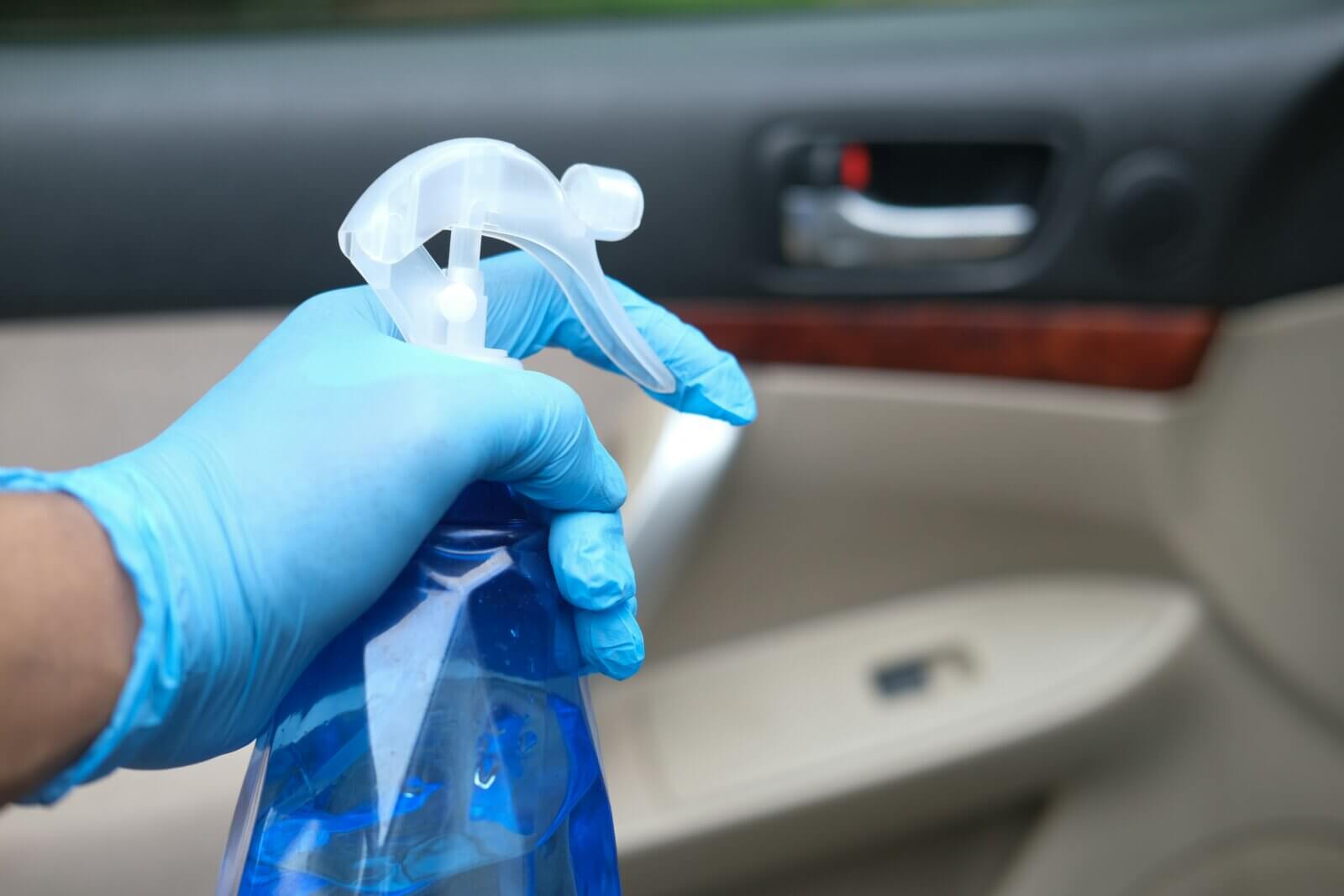
Car interior disinfection: how and why to do it
The car interior is a confined space where viruses feel as comfortable as in a cramped apartment. Therefore, disinfection, especially during a pandemic and after quarantine, is a mandatory procedure for every day, which will help protect you and your passengers from infection and improve the microclimate in the cabin. We'll tell you how to disinfect your car yourself, what areas [...]
Content:
The car interior is a confined space where viruses feel as comfortable as in a cramped apartment. Therefore, disinfection, especially during a pandemic and after quarantine, is a mandatory procedure for every day, which will help protect you and your passengers from infection and improve the microclimate in the cabin. We'll tell you how to disinfect your car yourself, which areas to treat, and what products you'll need.
Why you need to disinfect your car interior
American CarRantals car rental company conducted a study involving 1,000 car owners.
The results are as follows:
- clean the car interior once a year - 32% drivers;
- do not clean the interior at all - 12% drivers.
This means that almost half of the respondents ignore the cleanliness of their cars and drive every day, where about 700 strains of bacteria live and multiply. This neglect of basic sanitary standards is dangerous not only in a pandemic, but also in a stable epidemiological situation.
Bacteria enter the car interior through clothing, hands (you stop at a petrol station, pick up a petrol gun - you have a ready-made scattering of pathogens on your palms), as well as other passengers and food. Spilled juice, crumbs from a McDonald's or French fries - all of this is an excellent breeding ground for bacteria. As a result, the entire car becomes as dirty as a toilet seat.
CarRantals conducted a study to check how many bacteria (CFU - colony forming units) are present on the working surfaces of the vehicle interior. The steering wheel was the most favourite place for bacteria, with 629 CFU per 1 cm2:
- This is 6 times dirtier than a smartphone screen;
- 4 times dirtier than the toilet seat in a public toilet;
- 2 times dirtier than lift buttons in a residential building.
In addition to the steering wheel, high concentrations of bacteria were found on the inner door handle, seat belts, cup holder, gear lever, dashboard, armrests, seat adjuster, etc.
Not all bacteria are dangerous, but there is, for example, staphylococcus aureus, which causes dermatological diseases, poisoning and toxic shock syndrome. And that's not to mention Covid-19, which feels great on plastic and metal surfaces where it lives up to 72 hours.
How to disinfect a car
What products can be used
You need to choose a car disinfectant based on the materials used in the interior. The safest and most effective are alcohol-containing solutions that contain alcohol not less than 60%. However, it is better not to use such products for leather. For leather parts, a soapy solution (soap + water) is suitable - this product will help remove bacteria from surfaces, but will not harm the materials. Just make sure there is plenty of soap suds.
Specialised automotive microfibre or all-purpose microfibre is ideal for cleaning surfaces. It will not scratch anything.
The selected treatment solution can be poured into a spray bottle and sprayed onto the surface. This will significantly speed up the process.
What to process
The car's treatment begins with the "hot spots":
- of the steering wheel;
- seat belts;
- of the dashboard;
- the gearshift knob's knob;
- door handles;
- door pockets;
- seat adjuster;
- headrests;
- ventilation holes.
Disinfection should be carried out in disposable medical or household gloves, and hands should be treated with a sanitizer: before and after the procedure.
When and how often
Wet light cleaning of the interior should be carried out once a day - before putting the car in the garage or leaving it in the car park. Complete treatment of the car against viruses should be carried out once a week: completely clean the interior and wash the car outside. If you have to transport people in the car every day, you need to clean it more often. For example, taxis must be disinfected in full every day during a pandemic.
The sequence of actions
- Treat your hands with antiseptic and wear rubber gloves.
- Remove all rubbish from the cabin: food packaging, empty cups, used napkins, etc.
- Soak the microfibre in a detergent solution or spray it on the areas to be cleaned and wipe all the hot spots - the areas you and your passengers touch most often - and don't forget to treat the car keys.
- Ventilate the vehicle by opening all windows and doors.
After disinfecting the vehicle interior, remove the gloves and wipe your hands again with the antiseptic. The gloves and microfibre can be disposed of in the general waste bin.
Disinfection is not only mandatory during a pandemic
When the quarantine began, there were immediate recommendations from doctors that you should disinfect your vehicles and only use gloves to pick up the fuel hose or charging cable. But this is also true in normal times. You need to clean your car inside and out not once a year, but at least once a week, and carry out preventive cleaning every day.






